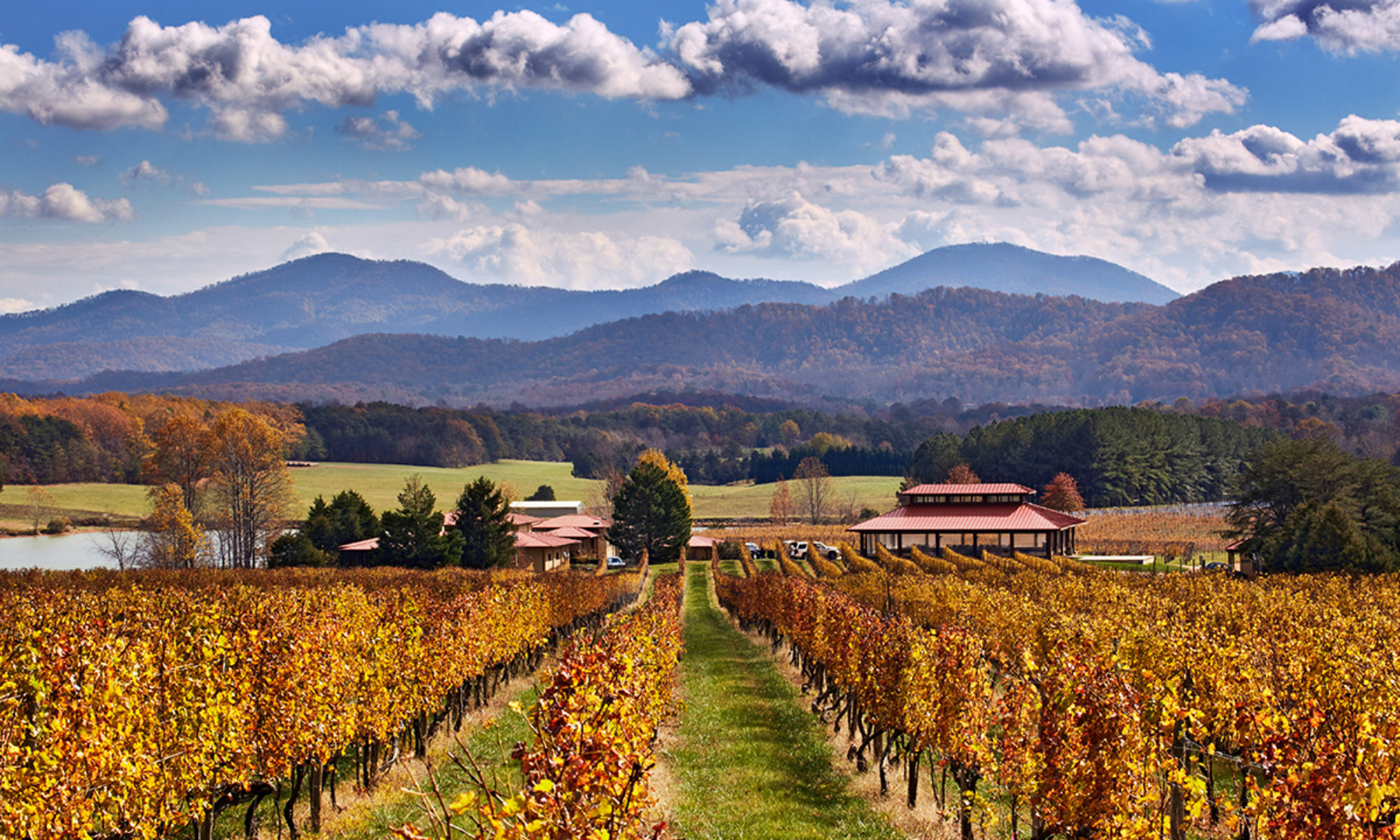Located on Little River Dam Road in Radford, Giles County, just south of Interstate 81. JBR’s name derives from the initials of owner Jessee B. Ring. Ring was born in Giles County. Work in software took him to Pennsylvania, Utah and California, until he returned to his roots in 2005 with his wife Deborah and started the small vineyard. For years the ultimate “mon & pop winery,” with the grapes in the house’s front yard, the basement serving as production facility, and the dining room as tasting room, JBR expanded beginning in 2015. Now there is a 2.5-acre vineyard, and a new winery and tasting room just opened in May 2020.
Wines. Tier II. Unusually for Virginia vineyards, JBR has only two types of grapes now in production, Riesling for white wines and Pinot Noir for red wines – the varieties themselves both unusual in Virginia, and reflective of the mountainous conditions of the vineyard. Different styles of wines are made from each grape.
Setting. One star. Visits to JBR have been by appointment only at the house in Pulaski County. Now with the May 2020 completion and opening of the larger Giles County facility in Radford, the experience will change considerably. At 1800 feet altitude, minutes from the confluence of the New River and Little River, and of Claytor Lake. The views from the hillside winery are good, and the Blue Ridge Mountain scenery on the way in is as always superb. JBR’s first “Dog Days of Summer Wine with your Canine” weekend was held in July 2020.
Stories. The Saga of Mary Draper Ingles. The push of European settlers into the Appalachian Mountains created numerous tensions and conflicts with Native Americans, culminating in the French and Indian Wars (1754-1763). Many settlers were taken captive by the Native Americans, some of whom escaped and made their way back to European settlements. One of the most famous escapee tales is that of Mary Draper Ingles, a story kept alive in Radford.
Mary Draper was born in 1732 in Philadelphia, daughter of immigrants from Donegal, Ireland. The family moved to the James River area, where her father disappeared in 1744. The remaining family moved in 1748 to near present-day Blacksburg, establishing Draper’s Meadow, where Mary married William Ingles. In 1755, the second year of the French & Indian War, Draper’s Meadow was raided by a group of Shawnee Indians: some settlers were killed and others taken captive, including Mary and her two younger sons. The captives were taken, up the New River and the Kanawha River, to Lower Shawneetown, at the junction of the Ohio and Scioto rivers. One son was taken farther along to Detroit, and was redeemed after a decade with the Shawnee, while the other son died in captivity. After two months with the Shawnee, Mary escaped with another woman. Their journey back towards their homes involved a trek of over 500 miles, crossing at least 145 creeks and rivers (apparently neither woman knew how to swim), and making their way through the uncharted Appalachian Mountains. They fed on walnuts, wild grapes, pawpaws, blackberries, roots and frogs. After a struggle nearly two months, and becoming separated from her companion, she finally made contact with an explorer near the Palisade Cliffs on the New River. The saga of her escape has been memorialized in two movies, Follow the River (1995), and The Captives (2004).
Mary Draper Ingles was reunited with her husband and had four more children. They established the Ingles Ferry on the New River and the Ingles Ferry Hill Tavern near Radford. Mary died there in 1815, age 83. Today the Ingles Bottom Archeological Sites in Radford protects her former cabin and the site of Ingles Ferry, as well as a variety of sites relating to human occupation over several thousand years.
